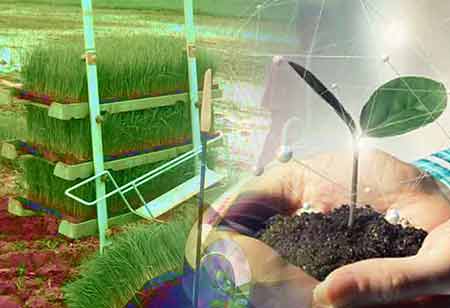Thank you for Subscribing to Agri Business Review Weekly Brief
EU Compound Feed Market is Expecting a Decline in 2022
The European Feed Manufacturers’ Federation reported that EU compound feed production for farmed animals in 2021 observed an increase of 0.03 per cent compared to 2020. Despite the continuing COVID-19 pandemic

By
Agri Business Review | Monday, July 19, 2021
Stay ahead of the industry with exclusive feature stories on the top companies, expert insights and the latest news delivered straight to your inbox. Subscribe today.
Due to several external factors, the EU market for compound feed is observing a drastic fall in the demand. Countries are accelerating production to retain the loss.
FREMONT, CA: The European Feed Manufacturers’ Federation reported that EU compound feed production for farmed animals in 2021 observed an increase of 0.03 per cent compared to 2020. Despite the continuing COVID-19 pandemic, global grain market rally, supply chain disruptions, and spread of animal diseases in 2021, the animal feed sector, aside from the pig feed sector, managed to stabilise or boost its production.
With the rise of several challenges such as the critical pig meat situation, reduced demand in export markets, high feed grain costs, the impact of African swine fever (ASF), and the sanitary ban that followed, pig feed production fell by -1.5 per cent in 2021. Countries such as Germany, France, Portugal, Spain, Austria, Slovenia, and Hungary were the most affected. The Netherlands and Belgium insisted on the depopulation of pig herds to reduce agricultural environmental pollution.
However, the EU's poultry feed sector has shown growth in its production by 1.1 per cent compared to 2020. Thus, it is retaining the losses created by COVID-19 lockdown measures. Ireland, Spain, Italy, Portugal, Austria, Finland, and Romania observed an increase of more than 5 per cent. Nevertheless, countries like Germany, France, Belgium, Sweden, Poland, and Lithuania reported a decrease in productivity primarily due to the high cost of raw materials, avian influenza, and static or reduced retail prices for eggs impacting poultry farming.
There is an increase in the cattle feed by 0.2 per cent over the previous year, owing to increases in output in Ireland, Bulgaria, and Austria, as well as a severe drought that hampered grass growth. As a result of excessive costs for raw materials, dairy farmers in Italy and the Czech Republic chose to purchase industrial compound feed rather than mix their feed on farms.
Market Forecast for 2022
As there is a rising cost for animals’ feed, decreasing market demand, and avian influenza pervading several countries, the EU pig and poultry farms are expected to reduce their activities. Hence, the FEFAC members are expecting a significant decrease in the overall compound feed industry by -2.9 per cent. Above all, the ongoing Russian and Ukrainian conflicts are causing uncertainties in the market. Increased feed imports from the US and Canada are only partially compensating for the loss of feed maize, sunflower meal and other resources from Ukraine and Russia. Moving existing grain stocks out of Ukraine is a challenge for the logistics sector. Therefore, various market factors would restrain demand for compound feed in 2002, such as:
• The continued spread of animal diseases such as avian influenza and ASF.
• Economic uncertainties due to the war in Ukraine.
• Farm-gate prices discounts animal products below cost price.
• EU policy decisions such as lowering greenhouse gas and other emissions, welfare policy and deforestation-free supply chains.
• Impact of COVID-19 on the supply chain.





